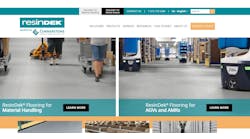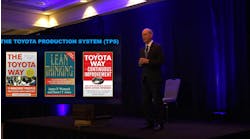How Small Manufacturers Can Develop Risk Management Strategies for Supply Chains
The COVID-19 pandemic brought to light a stark reality about current supply chains. As Nissan Motor Co.’s Chief Operating Officer Ashwani Gupta points out, “The just-in-time model is designed for supply-chain efficiencies and economies of scale. The repercussions of an unprecedented crisis like COVID highlight the fragility of our supply-chain model.”
The U.S. supply chain has struggled to adapt and restock pandemic-depleted inventories. There are industry wide shortages and a lag in how many manufacturers are responding.
Supply chains often represent a company’s highest costs. Identifying risks to your supply chain can help you respond rapidly and confidently to future supply chain disruptions. Common supply chain risk drivers involve disruptions, delays, inaccurate forecasting and procurement issues. Obviously, we all know now that a pandemic poses a major risk to supply chains, but other disruptions include natural disasters and labor disputes.
Raw material delays, lack of capacity at a supplier, poor quality, transportation capacity – these all create bottlenecks. Inaccurate forecasting, short product life cycles, one-time events or sales promotions, and seasonality can wreak havoc on getting products out the door. From the procurement side, beware of key components procured from a single source, industry wide shortages, and long-term versus short-term contracts.
Avoid common pitfalls
Your supply chain is only as strong as its weakest link. Relying on single source suppliers is a common misstep for smaller manufacturers. It’s natural to build relationships, but having too many eggs in one basket is a huge risk.
Silos within your organization – your procurement disconnected from sales, operations, customer service and R&D teams – is another huge problem for your supply chain. A simple change in daily routines can resolve these disconnects. Finally, many small- and medium-sized manufacturers (SMMs) don’t have experience forecasting inventories. Their response to the current supply chain issue is to buy as much as possible, hoping not to run out. This creates setbacks while undoing years of continuous improvement initiatives. Storing three years’ worth of grease leaves a small firm with nowhere to operate efficiently!
Here are some common supply chain mistakes for SMMs:
- Single source supply for high-runner parts or materials
- No linkage between procurement and sales forecasting
- No partnership with key customers and suppliers to convert supply chain model from make-to-order to make-to-stock where it makes sense
- Handshake relationship with suppliers with no formal long-term commitments
- No formal order points, triggers or defined inventory targets
Building a resilient supply chain
The goal of the supply chain is to deliver products to customers on time and at the lowest cost possible. It is a closed-loop process involving many interdependent disciplines – strategic planning, inventory management, vender management, operations, distribution and logistics, and customer experience. Here are four areas to focus on in order to build a strong and resilient supply chain.
1. Strategy: First you need to ensure your supply chain strategy aligns with your company’s business strategy. Sales, inventory and operations planning (SIOP) is a process engaging all departments – sales, finance, operations, scheduling and production – on laying out demand and supply plans throughout the year. Talk about demand and supply at your monthly SIOP meetings and make sure they match your company’s financial objectives. Decide strategically if you will outsource manufacturing, vertically integrate, or whether you will have in-house manufacturing. Map out a factory and warehouse network, considering proximity to raw material supply and customers to minimize freight costs. Finally, determine the flow and quantity of goods in the supply chain network.
2. Raw material supply: Take a stratified approach looking at the critical value of parts. Classify them A for critical or custom parts, B for standard parts, and C for commodities. Vet all sources, negotiate contracts and schedule deliveries. Routinely measure and assess supplier performance and give your suppliers feedback based on these metrics. Actively participate in vendor management – get to know your suppliers. It’s a closed loop and you’re on a continuous improvement wheel all the time with your supply chain. Managing your company’s assets and inventory is another key part of developing your raw material supply.
3. Produce and deliver products: Develop a robust method to schedule production activities using materials requirements planning and SIOP. Manage performance metrics and scorecards for effectiveness. It’s important that what you have in actual inventory matches what your system says, so manage your warehouse and inventory accurately and efficiently. Without that, it’s difficult to plan accurately. A key for good customer experience is how quickly you process and invoice customer orders. Lastly, select the best distribution strategy and freight options based on your customer and business needs.
4. Redundancy: Consider whether your company can afford to fund a second tool for custom parts. That’s a financial question whether your business can support that investment. Look at splitting the order between two sources for standard, high-volume parts. For commodities, develop a network of like distributors who you can deploy quickly to resolve availability issues.
Supply chain planning
The actions that you take today not only help with current supply chain disruptions but lay the foundation for dealing with future disruptions. To be proactive, you must dedicate resources to work on strategic supply chain projects, to use tools and metrics to identify supply chain risks, and to work as a team to mitigate risks. Here are some key actions to consider:
- Leverage data to improve visibility: Maximize visibility into demand, inventory, capacity, supply chain costs and customer experience across the company to recognize where you have risks.
- Build a sales, finance and production SWAT team: Mobilize a dedicated team that looks at understanding the risks and discussing actions that can be taken.
- Evaluate supply chain scenarios: Run simulations to predict when and where excesses and shortages are likely to occur. Run end-to-end scenarios to get actionable insights that will optimize operational metrics.
- Develop contingency plans: Based on the various end-to-end supply chain scenarios, execute and implement the models developed to reduce the risks and pain points in your supply chain
- Measure the impact of changes: Metrics are the key – inventory, capacity, supply chain costs and customer experience.
Your local MEP Center can help
Firms that put time and effort into reducing supply chain risks now will be able to weather future disruptions more easily. Your local MEP Center should be your first call. They have solutions that are right-sized to meet the needs and capabilities of SMMs.
MEP experts have tools so you can collect the right metrics to understand your supply chain. They can open doors for you – making introductions so you can establish new relationships. The secure MEP National Network Supplier Scouting portal connects SMMs from across the country free of charge. Through it your local MEP Center can submit a nationwide request that goes out to all 51 MEP Centers and can be seen by over 1,400 unique manufacturing experts, all happy to share knowledge and resources. Let the MEP National Network help your company develop a more resilient supply chain.
About the Author
Gary Steinberg
Gary Steinberg is an experienced supply chain/operations and management consultant with California Manufacturing Technology Consulting® (CMTC), part of the MEP National Network. Gary has over thirty-five years of industry experience in operations, manufacturing, and supply chain. Gary has held senior-level supply management positions with Fortune 500 companies such as Apple Computer, Alps Electric, Honeywell, and Hewlett Packard.





